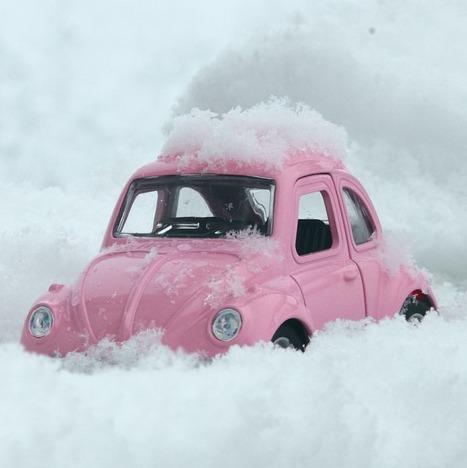Ann Arbor is a winter wonderland this year, and snow and ice are covering all the roads. Maybe this is your first winter driving in the snow, or perhaps you are a skilled winter driver just looking for a brush-up. If you have a car in Ann Arbor this winter, check out these helpful tips on preparing for winter and driving on icy roads.
First step, prepare your car for the cold weather.
-
Battery: In cold weather, it’s critical to have your battery fully charged. See a mechanic and have your alternator, voltage regulator, and drive belts checked.
-
Ignition System: Make sure there are no damaged ignition wires, worn sparks plugs, or cracks in your engine’s distributor cap.
-
Lights: Make sure to clean your light lenses and check that they are functioning properly. Dirty headlight lenses can reduce brightness by up to 90%.
-
Brake System: Have your brakes checked regularly!
-
Tires: Change your tires to all-season tires (M+S rated) so your car doesn’t slip and slide on the road. Snow tires will provide optimal traction on icy roads.
-
Exhaust System: Have a professional check your exhaust system which removes poisonous gases such as carbon monoxide. If your car is stuck in the snow and the engine is running, open a window slightly and make sure there is no snow in the exhaust pipe.
-
Heating and cooling system: Make sure your car has enough antifreeze and have the entire heating and cooling system checked for leaks.
-
Windshield wipers: To prevent damage to your wiper blades or motor, make sure wipers are free of ice and snow before starting the engine. If you are parked outside while it is snowing, prop your wipers up so they don’t get stuck in the ice and snow on your windshield.
-
Winter emergency kit: Have a kit ready if your car breaks down. Include the following items: a bag of abrasive material (sand, salt, or cat litter), small snow shovel, snow brush, traction mats, flashlight, window-washing solvent, gloves, ice scraper, blanket, and jumper cables.
Now that your car is ready, make sure you know how to handle driving in the snow.
-
Clear all snow and ice off of your vehicle and turn your heater on for a minute or two before using the defroster to prevent windows from fogging.
-
In heavy snow, clear a path of several feet in front of your car’s wheels by driving back and forth. Use a shovel if necessary.
-
If your car still can’t get out, use abrasive materials such as sand, salt, or traction mats to add traction.
-
You can also use other techniques to rock your vehicle out of the snow. Check out this video on Digging Your Car Out of the Snow for more information.
-
Once you’re on the road, be sure to keep a large following distance (about 8 to 10 seconds) when driving on slippery surfaces.
-
On a highway, avoid changing lanes due to potential loss of control if there is built-up snow or ice in between lanes.
-
Traction is greatest just before the wheels spin. The best way to keep traction is a gentle press on the accelerator.
-
Do not use cruise control on slippery and icy surfaces.
-
Stopping on slippery surfaces requires longer visibility and following and stopping distances. The stopping distance required on ice at 0° is twice the amount required at 32°.
-
Make sure you are aware of your car’s braking system. With an antilock braking system (ABS), don’t pump or remove your pedal from the brake. This system was designed to simulate the pulsing action, relieving pressure long enough to allow the wheel to turn.
Check out these tips about driving in the show for more information and remember to always be alert and aware of your surroundings when driving.
-Contributed by Stephen Philippou, Neighborhood Ambassador-Oxbridge
Information courtesy of AAA.

